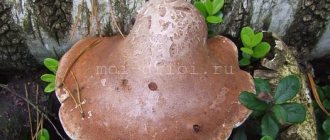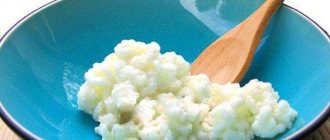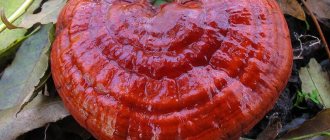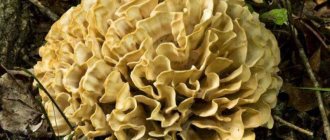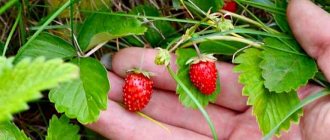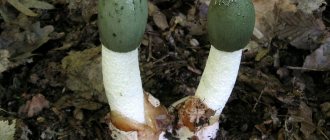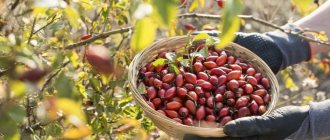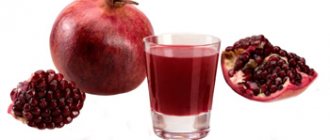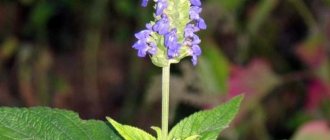Botanical description
The tinder fungus consists of a fruiting body and mycelium, which are formed by thin colorless threads (hyphae).
At the same time, most of it (the mycelium) is located in the body of the plant, and only the reproductive organs are “exposed” to the outside. Interestingly, the hyphae of the parasite penetrate into wood not by force, but by secreting enzymes that dissolve its cell membranes. As a result of these processes, cracks form in the bark of the “host”, into which fungal spores easily penetrate. After the mycelium grows, the fruiting body “emerges” onto the surface of the tree. Visually, it resembles an inverted saucer, which is half grown into the trunk. Moreover, the shape and structure of its pulp directly depends on the type of mushroom.
The fruiting bodies of polypores can be fleshy, filmy, woody, leathery, corky and fibrous. The color of their surface varies from light white to dark brown. They come in different shapes: prostrate, sessile (attached to the side), differentiated (with a cap and a stalk). The diameter of round mushrooms is 5-30 cm, and the length of elongated fruiting bodies is 0.5-1.2 m.
hat
It is flattened on top, which gave it its specific name. The surface is characterized by matte layers or grooves. The color varies from grayish to distinctly rusty.
The surface of a mature mushroom is often covered with a reddish spore powder. The growth of the fungus occurs due to the marginal zone. Usually it has a white color.
Leg
The fruiting body does not have a pronounced stalk and is sessile.
Spore-bearing layer
Is tubular. Painted white or light cream. It has a pronounced feature of retaining traces of mechanical impact for a long time.
Pulp
It is hard and woody, and therefore the mushroom is not eaten.
Spore powder
Has a rusty color. It is usually very plentiful.
Description of tinder
Experts say there are over 1,500 species of tinder fungus. Certain differences between them certainly exist, although there are many similarities.
What does a mushroom look like?
The appearance of most tinder fungi resembles a small inverted plate that seems to have grown into the trunk. The density of the mushroom and the outline of its shape may vary depending on the variety and age.
This unusual mushroom comes in different colors: from almost white to dark brown. The texture of the pulp may be fleshy, fibrous, woody, filmy, or cork-like.
Adult tinder fungi can reach 30 cm in diameter, and some even grow in length by more than 1 m.
Chemical composition
Photos and medicinal properties of birch polypore are of interest due to its chemical composition. The fruiting bodies contain:
- ascorbic acid;
- ergosterol peroxide;
- antioxidants;
- fatty acid;
- lycopene and beta-carotene;
- oleic and linoleic acids;
- betulin and lupeol;
- fomeficinic acid;
- pectins;
- chitin.
When used carefully according to recipes, birch polypore can improve your well-being. It is used for acute diseases and severe chronic illnesses.
Medicinal properties of larch tinder fungus
Fruit bodies contain eburicolic, fumaric, ricinolic, malic and citric acids, agaricic acid (up to 16%), d-glucosamine, resins (30-70%), fats, phytosterols, glucose and mannitol, as well as various other bioactive components, including antioxidants.
The medicinal properties of larch polypore are varied. Resinous substances have a healing effect on the liver and bile ducts, and show positive dynamics in pulmonary diseases, including tuberculosis.
The experience of Japanese fungotherapists has shown that tinder fungus causes the liver to secrete an enzyme that breaks down fats, which is why it is used for weight loss. Clinical trials of tinder fungus conducted in Japan allowed the isolation of a polysaccharide, which was named lanofil. This polysaccharide forces the “lazy” liver to secrete the necessary enzymes that break down glucose and fats, that is, to actually restore the impaired metabolism. After treatment, the opposite effect (gaining lost kilograms) is not observed.
Resinous substances are also detrimental to the pathogenic flora of the bronchopulmonary tract. The antibacterial activity of the mycelial culture extract has been shown against Yersinia pseudotuberculosis, the causative agent of pseudotuberculosis in humans and animals.
Agaricin, isolated from tinder fungus, in small doses when taken orally causes a hypnotic and sedative effect.
Where do tinder fungi grow?
The tinder fungus is considered a perennial mushroom, so it can be found in nature all year round. Their pores most often cluster on dead wood and stumps, and are much less likely to parasitize already weak trees. But this fungus can also develop on dead wood for several years after the death of the plant, causing brown rot. Typically, tinder fungi prefer deciduous trees:
- beech;
- alder;
- birch;
- cherry;
- willow;
- oak;
- Linden;
- white acacia;
- poplar;
- larch;
- pear.
Less commonly, this family of fungi can be found on spruce, yew and eucalyptus. Parasites are located at the bottom of infected trunks at a height of 3 to 20 meters. It often grows in forests and parks, and forms on trees that grow within the city, near roads. Fruits from May to mid-September. Distributed throughout Russia, in addition to the Far North.
For medicinal purposes, tinder fungus is specially grown in Asian countries, and in Europe and the USA.
What is tinder fungus
What is the tinder fungus, its medicinal properties, how to take it, what are the beneficial properties of this mushroom, all this is of great interest to those who lead a healthy lifestyle, monitor their health, and are interested in traditional methods of treatment, including with the help of medicinal plants.
So we will try to answer these questions in the following article. Two types of this fungus deserve close attention: the sulfur-yellow tinder fungus and the larch tinder fungus.
The sulfur-yellow tinder fungus (lat. Laetiporus sulphureus) is a fungus of the Polyporaceae family. It is considered conditionally edible, but can sometimes have a toxic effect; it is recommended to use it with caution and in limited quantities.
The fruiting bodies are annual, usually located low above the ground on tree trunks. At the first stage of development, the sulfur-yellow tinder fungus looks like a drop-shaped yellowish fleshy mass from intense yellow to orange (“flowing form”). Gradually, the fruiting body hardens, acquiring the “ear” shape characteristic of tinder fungi, consisting of several fused fan-shaped pseudocaps, often sitting on one common base, occasionally single. The size of the caps is from 10 to 40 cm.
The maximum thickness of the tree trunk is about 7 cm. The mass of the mushroom can reach 10 kg or more. The edges of the fruiting bodies are wavy and divided into lobes by deep cracks. The mushroom is always covered with a light creamy-yellow fluff.
A widespread wood-destroying parasitic fungus that attacks deciduous and coniferous trees. Causes red-brown destructive stem rot, red-brown prismatic core rot. It mainly affects the core part of the tree trunk, less often the sapwood. Trunk rot usually develops in old trees. Its length is about 3 m, but can reach 20 m.
With severe development of rot in the affected trees, the branches first dry out, then the entire tree dries out. Infection with rot occurs through broken branches, burns and wounds on the surface of the trunks. The fungus is able to continue its development on dead wood for several years after the death of the tree.
When burning fruiting bodies, the smoke repels small insects (mosquitoes, midges, etc.).
It is grown for medicinal purposes in Asian countries, and in Europe and the USA it is cultivated as edible.
Collection and preparation
Mushroom picking time is from August to November. The right decision would be to search for tinder fungi at a young age, but in older ones it is better to use only the cap. They are eaten fresh: they are rarely salted and dried. It is more convenient to knock down large fruiting bodies (always white inside) with sticks or axes. But they should be cut exclusively from living trees, and not rotten trunks.
Among the tinder fungus, there are 2 commercial varieties of the fungus - cleared of bark residues and cleared, in addition, of its own outer crust. The pulp must be cut into pieces before further processing. Infusions are prepared using boiled water or vodka and are always infused. Mushrooms should be stored in the refrigerator.
Is it possible to eat tinder fungus?
Among tinder fungi there are both edible and inedible species. Experienced collectors will be able to determine by the appearance of the mushroom whether it can be eaten or not.
In essence, its pulp does not pose a risk to human health, but in most cases it is too hard, and its taste is not worth the time spent chewing. Let's take a closer look at the beneficial properties of the mushroom, and whether it is dangerous or not.
Beneficial features
The beneficial properties of tinder include:
- improvement of liver function due to agaricin, which the mushroom is rich in;
- laxative and diuretic effect;
- decreased blood sugar levels;
- healing effect.
Why are they dangerous?
Although the mushroom is not poisonous, its abuse can lead to the following consequences:
- vomit;
- nausea;
- poisoning;
- rash.
Edible tinder fungi
Among tinder there are edible and inedible species. The latter are the overwhelming majority. There are no poisonous varieties among tinder fungi. You can’t get poisoned by the pulp of tinder fungi; it’s just extremely harsh in many representatives of the group. And the taste of these mushrooms is not impressive.
When going into the forest, carefully study the appearance of edible tinder mushrooms. Among them there are several quite tasty specimens - they are used in cooking.
Sulfur-yellow tinder fungus
It is classified as conditionally edible, and the toxins contained in it can cause poisoning. The “young animals” are eaten – their flesh is much more tender than that of the old-timers.
Only young sulfur-yellow tinder fungi growing on deciduous trees are suitable for food. There should be no dark spots on their caps.
Cut mushroom bodies can be stored in the refrigerator for 3-5 days. They can also be frozen for a whole year. To prevent the product from deteriorating, a temperature of at least minus 18°C is needed.
In the video you can see how sulfur-yellow tinder fungus is fried with onions and dill in forest conditions. The recipe is clear, step-by-step. The author of the video also suggests other ways to prepare tinder fungus:
Scaly
Prefers to grow on deciduous trees, especially elms. Its yellowish-gray fruit body is covered with brownish speckled scales. Scaly polypores grow singly. They have thick black legs. When young, they are suitable for food - they are pickled, salted, dried, and added to sauces and soups. Traditional medicine uses them to produce drugs that stimulate the functioning of the gallbladder.
liverwort
It can be found on oak trees. It is shaped like a tongue. The body is fleshy, as if saturated with red liquid. Growth time: from July to frost. The section shows a marble pattern. Used at a young age - for pickling.
Medicinal properties of sulfur-yellow tinder fungus
A large number of bioactive substances were found in the mushroom. Among them are amino acids, glycosides, and steroids. The tissues of the tinder fungus synthesize specific lecithin LSL (Laetiporus sulphureits lectin), which has both hemolytic and hemagglutinative effects. Thanks to this property, an antithrombosis drug is being developed.
An aqueous extract of fresh fruiting bodies inhibits the growth of sarcoma-180 and Ehrlich carcinoma. Methanol extract of mycelium stops the growth of the T4 leukemia line and is cytotoxic to Kato III gastric cancer cells and HL-60 myeloid leukemia cells.
Sulfur-yellow tinder fungus has a pronounced antimicrobial and antiviral effect. The mycelial extract suppresses the malarial plasmodium (Plasmodium falciparum). The extract is resistant to methicillin Staphylococcus aureus, toxic to Escherichia coli. The activity of the extract of a deep mycelial culture against the bacterium Serrata marcescens, one of the main causative agents of inflammation of the urinary canals in fibrosis, has been shown. Experiments have shown inhibition of reverse transcription in HIV viruses.
Other medical properties include lowering blood sugar levels, as well as usefulness in endocrine diseases due to the content of eburicoic acid.
Some sources mention it as mildly poisonous and even hallucinogenic. It has a slight laxative effect and can sometimes cause swelling of the lips, nausea, vomiting and dizziness. There are references to the possibility of allergic reactions when eating the mushroom, to cases of ataxia and visual hallucinations in children. All information about such effects refers to mushrooms collected from coniferous trees, therefore, to avoid poisoning, tinder fungi growing on deciduous trees should be collected.
Inedible tinder fungi
Inedible polypores are not deadly, but can cause unpleasant symptoms:
- allergic reaction;
- intoxication of the body with corresponding symptoms - vomiting, dizziness, nausea.
Many tinder fungi, including inedible ones, are actively used in medicine - medicinal products are prepared from them. Any use of mushrooms should be preceded by consultation with a physician.
Birch
Likes to grow on dead birch trunks. Its body is convex, gray-white in color. It contains many amino acids and microelements. This was appreciated by microorganisms and insects, who generously laid larvae in the mushroom. Pharmacology uses mushroom polymers isolated from this mushroom to produce dietary supplements for diabetics.
The video talks about birch polypore, its various uses (medicine) and other beneficial properties. The blogger shows from his own experience how to use it correctly:
Beveled
It is also called chaga. Grows on birch, alder, and rowan trees. The body is hard, woody. The shape is irregular, the surface is rough. Color – dark brown or black. There are white veins on the cut. Chaga is used in medicine - for decoctions and infusions.
Doubles and their differences
The unique appearance and stunning size eliminate any confusion in the definition of the flat tinder fungus. There are some similarities with several species.
Varnished tinder fungus. Inedible. It is distinguished by a waxy cap and smaller size.
Lacquered polypore is widely used in Chinese folk medicine.
Southern tinder fungus. Inedible, non-toxic. It is distinguished by its large size and glossy surface.
Its edge, unlike the flat tinder fungus, is gray-brown
Medicinal properties of birch polypore
Traditional medicine has been using the mushroom for decades. In small dosages, birch tinder fungus brings benefits to the body, namely:
- helps with chronic constipation due to its laxative effect;
- cleanses the body of toxins and improves liver function;
- strengthens the immune system and prevents colds;
- relieves pain and inflammation in joint ailments;
- accelerates skin healing and disinfects tissue from cuts, wounds and ulcers;
- improves mood and has a tonic effect;
- serves as a prevention of cancer and stimulates the body to resist malignant tumors;
- has a mild analgesic effect;
- soothes irritation of the mucous membranes of the stomach and intestines;
- improves the functioning of the kidneys and reproductive system.
Birch tinder fungus reduces appetite. This makes it useful for dieting and promotes weight loss.
Birch polypore has a diuretic effect and eliminates swelling
Remove toxins
Residents of Ancient Rome and Greece believed in the healing effect of this mushroom family. In those days, real tinder was worth a lot of money, so it was almost impossible for ordinary people to purchase it. But among the nobility this mushroom became widespread primarily thanks to the famous recipe of King Mithridates. This ruler made a grand discovery regarding the healing properties of the tinder fungus and argued: if you constantly take a drug based on the mentioned fungus, you can protect your body from toxins.
But the ability of the mushroom to remove harmful substances without harm to health has already been established by modern scientists. Properly processed pulp in tincture can cope with even the strongest poisons such as mercury dichloride, arsenic compounds and other dangerous variations that can accumulate in the human body for years. Later, the reason for such a unique function was revealed - the secret lay in agaric acid, the natural analogues of which simply do not exist in modern science.
We treat the liver
An important property of tinder fungus is the speedy recovery of the liver. Siberians were already aware of it several centuries ago: it was they who collected the mushroom and drank it in the form of special mixtures and powders, which contributed to the production of enzymes that break down protein. And the fair half of humanity has gotten used to using such an unusual mushroom as an ideal remedy to get rid of excess weight.
This topic was picked up and developed by Japanese scientists, quickly realizing that a lot of money could be made from this drug. Asian pharmacological companies began to actively produce tablets and medicinal tinctures based on tinder fungus, buying the mushroom in huge volumes in Russia. During the development of the new formula, the Japanese discovered an interesting component in the mushroom - the polysaccharide lanofil, which helps the liver quickly secrete the necessary enzymes that help the organ work better. For example, the following recipes are especially effective:
- 0.5 tsp. ground tinder fungus must be mixed with a glass of boiling water and kept in a water bath for at least 15 minutes, after which the resulting drink should be gradually drunk throughout the day in small sips, and to make the taste sweeter, you can add 1 tsp. honey;
- 1 tsp. (without a slide) mix finely crushed tinder fungus in 1/2 cup of boiled water and take 3 times a day half an hour to 40 minutes before meals;
- dry the birch tinder cap well and grind it into powder, to which you should add vodka or alcohol in the proportions of 5 g per 150 ml, and let it brew in a cold, dark place for 2 weeks, take 1 tsp. 3 mixtures per day;
- 3 tbsp. l. chopped mushroom should be poured into 0.5 liters of vodka, kept for 1.5-2 weeks at a cool temperature, without straining, and drunk 2-3 tsp. tinctures 2 times a day 25 minutes before meals.
Attention! The medicinal properties of birch chaga are also used in folk medicine to prevent stomach ulcers and tumors. The mushroom perfectly helps to heal external and internal wounds on the walls of organs and heal cracks.
Polypore in folk medicine
The healing properties of the larch sponge are known from the prescriptions of Dioscorides. It was also widely known in Rus', and until the middle of the last century it was considered a traditional medicine against tuberculosis and even served as a profitable export product for Russia. Preparations from larch sponge are used against debilitating night sweats in patients with tuberculosis.
In folk medicine, in addition to these diseases, larch sponge preparations are used for febrile diseases, diabetes, neurasthenia, increased thyroid function, pneumonia, bronchitis, lung and bronchial cancer at any stage. It is used as a powder for purulent wounds and ulcers.
Below are a few folk recipes:
A water infusion (a teaspoon of crushed mushroom in a glass of boiling water, leave for 8-10 hours, strain, take 1/3 cup 3 times a day) has a laxative, sedative and mild hypnotic effect.
For tumors, prepare the following tincture: 5 g of dry tinder fungus is poured into 150 ml of diluted vodka and left for 2 weeks in the refrigerator. Take 1 tbsp. l. 3 times a day before meals.
For general health benefits, the recommendations are as follows:
- 1 tbsp. l. Boil chopped mushroom for 20 minutes in 1.5 cups of boiling water, leave for 4 hours, strain. Take 1 tbsp. l. 3-4 times a day.
- Take 20 g of crushed larch tinder fungus, pour in 0.5 liters of diluted vodka (1:1 with water) and leave for 3 days in the refrigerator. Take according to
- Art. l. in the evening before bed.
- Pour 1 level teaspoon of dry tinder fungus powder into 1/2 glass of water, stir and drink quickly. Do this 3 times a day 20-30 minutes before meals. Well -
- month.
Contraindications
Professional mushroom pickers advise not to experiment with medicines that were prepared on the basis of tinder fungus, because they can cause an allergic reaction in the form of a rash on the skin. The mushroom in question has a mild laxative effect, so when treating liver diseases it is not recommended to use it for diarrhea, so as not to worsen your own well-being. Such recipes will not help people suffering from urolithiasis either - existing health problems will only get worse, and the ailments that bother you will not go away. Also, the main contraindication is pregnancy (especially the last months) and breastfeeding.
Treating children with tinder fungus is strictly prohibited.
If the selected formulations are not prepared correctly, they will also have a negative impact on the patient in the form of dizziness, nausea and vomiting. In any case, treatment with tinder fungus should only be done under the strict supervision of a personal physician.
It is prohibited to use antibiotics and other potent drugs during fungal treatment. It is worth adjusting your usual diet, since during this period the patient is contraindicated in meat products (smoked meats and sausages, pickles), fatty broths, hot sauces, seasonings and spices, strong black tea and coffee in large quantities. Now the menu should be dairy-vegetable, with strict adherence to dosage.
There is still active debate about the tinder fungus: can this mushroom be considered edible or does everyone risk being poisoned by it, is it suitable for medicinal tinctures or does it have absolutely no effect? This family has hundreds of species that differ in appearance and pulp structure, which means that the principle of application for each option should not duplicate other recommendations. If you use tinder fungus under the close supervision of an experienced doctor, then the beneficial components of the fungus can really help improve your health at home.
Growing methods
To grow tinder fungus at home, be sure to study the peculiarities of its relationship with the substrate, in contrast to other mushrooms.
Irina Selyutina (Biologist):
Today, growing tinder fungi in artificial conditions “from scratch” is exotic. The problem is that the mycelium must be grown in test tubes with a certain nutrient medium with further incubation, and this is not available to every amateur mushroom grower and requires not only large expenses, but also patience, and in a sense, luck.
However, there are ways to grow with existing mycelium.
Tinder fungi are characterized by parasitism. The substrate is made from sawdust, shavings and young branches. It is poured with boiling water and cooled to room temperature.
Take the flat white mycelium of the fungus and mix it thoroughly with the soil mixture. The mass is carefully placed in plastic bags, small cuts are made in the sides in a checkerboard pattern, and then placed in conditions of high humidity (80%) and natural changes in lighting. As soon as the first harvest appears, it is collected and used for its intended purpose.
Dry hemp or wood blocks are well suited for growing. After making a deep cut in the trunk, white mycelium is placed into it. The fungus will develop faster in higher humidity. After 4 months, a generation of mushrooms appears, which are removed to get a new one.
Methods of preparation and use
Traditional medicine uses the pulp of the birch polypore to prepare several medicines. They can be used externally and internally.
Tincture of birch polypore
An alcoholic tincture of tree mushroom is beneficial for nervous disorders and sleep disorders. It is made according to this recipe:
- dry tinder fungus is ground to a powder in an amount of 200 g;
- pour 500 ml of high-quality vodka into the raw material;
- seal the vessel and put it in a dark place for three days;
- strain the medicine from the sediment.
Take the finished tincture one small spoon an hour before going to bed. The course of treatment must be continued for three weeks.
Birch polypore tincture is suitable for rubbing joints for arthritis and rheumatism
Infusion
For cardiovascular ailments and intestinal diseases, you can take a water infusion of tree mushroom. The recipe for preparing the product looks like this:
- dry mushroom is crushed in the amount of two small spoons;
- pour the resulting powder into 200 ml of hot clean water;
- closed, leave to infuse for two days;
- After time, filter the product and pour it into a new container.
You need to take the infusion 15 ml three times a day on an empty stomach.
It is not recommended to brew birch polypore in boiling water, as this destroys the beneficial substances in the composition.
Powder
One of the recipes for using birch tinder fungus recommends using dry fruiting body powder. Medicinal raw materials disinfect damage and promote rapid skin restoration. Wounds and ulcers are washed with peroxide or alcohol, and then sprinkled with mushroom powder and a sterile bandage is applied on top.
Scaly tinder soup
This species can be used to make dumpling soup. Boil 300 g of finely chopped caps, bring to a boil and simmer over low heat for half an hour. Then they are taken out and minced in a meat grinder, and dumplings, potatoes, herbs and spices are cooked in the broth - to taste. The chopped mushrooms are again added to the soup and brought to a boil, after which they are simmered over low heat for another quarter of an hour.
Roasted liverwort
This type of mushroom can be fried with onions and potatoes. But first you need to cook it for half an hour over low heat in salted water. Salt, herbs and spices are added to taste.
Sulfur-yellow tinder fungus salad
Take 200 g of mushroom, boil in salted water for an hour, cool and cut. Sour cream, onion, vinegar or lemon are added to the salad, as well as salt and herbs to taste. You can enhance the nutritional value of potatoes.
Multi-colored tinder fungus
Composition and beneficial properties of the mushroom
Regardless of the variety, the following components can be combined in the mushroom:
- cellulose;
- proteins;
- carbohydrates;
- B vitamins;
- resinous substances;
- manganese;
- potassium;
- phosphorus;
- selenium;
- zinc.
The variety of beneficial substances makes it simply indispensable for alternative medicine. In ancient times, it was used to treat diseases of the genitourinary and respiratory systems, and also as an antidote for poisoning. Its main positive qualities include:
- antiseptic;
- anti-inflammatory;
- bactericidal;
- healing;
- antiviral;
- diuretic;
- rejuvenating;
- expectorant;
- restorative;
- antitumor effect.
The benefits of the tinder fungus are noted during the breakdown of fats in the process of losing weight. In addition, he is able to remove toxins and other harmful substances from the body. It is also important that its components can have an anti-carcinogenic effect, which is indispensable in the treatment of oncology. If the functioning of the organs of the digestive system is disrupted, the intestinal microflora is restored, constipation is eliminated, as well as a detrimental effect on the bacteria, which leads to the development of stomach and duodenal ulcers, as well as gastritis. In gynecology, drugs based on it help in the treatment of the uterus and other reproductive organs.
INTERESTING fact: Mustard for joints for arthritis and arthrosis
The instructions for it indicate that it can be used for cosmetic procedures. It helps restore the hair structure and return it to its former strength and beauty, as well as restore nails and skin.
Some interesting facts
This fruiting body has several unique features:
- A flat cut polypore applied to the wound promotes rapid healing and tissue regeneration.
- Over the course of several years, the flat tinder fungus can reach enormous sizes, while the light surface of the geminophore remains rounded, even and smooth.
- Young flat polypores can germinate on the body of an old mushroom, creating bizarre structures.
- Craftsmen create stunning paintings on the internal porous surface of large specimens. For this, a match, thin stick or rod is enough.
